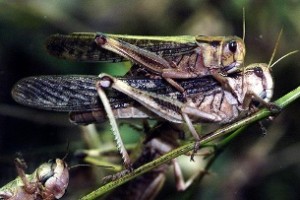I treat all food as a risk, because I know how it’s produced, I’m familiar with the outbreaks, and I don’t get invited to dinner much.
But I eat (probably too much).
 Blue Bell Creameries, according to the Houston Chronicle, ignored critical parts of federal recommendations aimed at preventing exactly the kind of foodborne illness that thrust the Texas institution into crisis this year.
Blue Bell Creameries, according to the Houston Chronicle, ignored critical parts of federal recommendations aimed at preventing exactly the kind of foodborne illness that thrust the Texas institution into crisis this year.
Among the most straightforward: If listeria shows up in the plant, check for it in the ice cream.
The draft guidelines for fighting the bacteria inside cold food plants were published seven years ago. They were optional and have yet to be finalized but nonetheless provide a road map for hunting and destroying the bug.
Ice cream companies large and small have flouted the guidelines.
Blue Bell “is no better or no worse than probably 90 percent of the rest of the companies,” said Mansour Samadpour, whose IEH Laboratories runs testing programs and crisis consulting for food producers.
Three ice cream makers got into trouble with listeria within the last year: Snoqualmie Ice Cream in Washington state, Jeni’s Splendid Ice Creams in Ohio and the much larger Blue Bell. It’s among the top purveyors of frozen treats in the United States. Of the other big companies, Unilever, which makes Breyers and Ben & Jerry’s, declined to say whether it follows the 2008 guidance. Nestlé S.A., which produces Häagen-Dazs and Dreyers, also wouldn’t say. Wells Enterprises Inc., maker of Blue Bunny, didn’t return messages.
The 2008 document, called “Guidance for Industry: Control of Listeria monocytogenes in Refrigerated or Frozen Ready-To-Eat Foods,” laid out a plan to attack one of the most ubiquitous and pernicious microbes in the environment. It lives in soil and animal feed. Refrigeration provides little deterrent to growth. It survives freezing. Once it enters a plant, it’s so hard to remove that, in extreme cases, entire facilities have been demolished to eliminate it.
When companies use the guidelines, they find that they work.
 After the Nebraska Department of Agriculture found listeria in a random sample of Jeni’s, the CEO instituted a monitoring program as stringent as what the FDA prescribed in 2008. After destroying product worth $2 million and spending hundreds of thousands on thorough cleanings and plant upgrades, the company again found listeria in its product June 12 – illustrating the pathogen’s resiliency. But this time, Jeni’s caught it before it left the plant.
After the Nebraska Department of Agriculture found listeria in a random sample of Jeni’s, the CEO instituted a monitoring program as stringent as what the FDA prescribed in 2008. After destroying product worth $2 million and spending hundreds of thousands on thorough cleanings and plant upgrades, the company again found listeria in its product June 12 – illustrating the pathogen’s resiliency. But this time, Jeni’s caught it before it left the plant.
Blue Bell now is trying to follow suit, committed to becoming “first-in-class with respect to all aspects of the manufacture of safe, delicious ice cream products,” spokesman Joe Robertson said in an email. It now has a team of microbiologists and, like Jeni’s, will test and hold its ice cream until proven safe, once production resumes. He said the company “always tried to do the right thing to produce high-quality, safe products,” but pending lawsuits in the listeria outbreak prevented him from discussing whether Blue Bell previously followed any aspects of the 2008 guidance.
The FDA recommended that even the smallest companies regularly test food contact surfaces and the food itself for listeria. That may seem like an obvious strategy, but industry and consumer advocates have long fought over it.
FDA records show that Blue Bell had written plans to test its plant environments for pathogens. But they didn’t include sampling the surfaces that come into contact with food or the food itself, or finding the root cause of the contamination. From 2013 to early 2015, Blue Bell found listeria on drains, floors, pallets, hoses, catwalks and surfaces near the equipment that fills containers. But it never looked for listeria in the ice cream.
Mandatory microbial testing on plant surfaces and in food has long been viewed by industry groups as a one-size-fits-all approach that doesn’t work and costs too much, especially for small producers. Some have deemed it unnecessary when there are controls – like pasteurization – that kill pathogens. But consumer advocates say those arguments veil a deeper objection: Companies know that if they test for bugs, they will find them, and if they find them, the law says they must act.
If Blue Bell had followed the 2008 guidance, the first listeria positive would have set off an intense hunt for the source and likely triggered recalls or stopped shipment of potentially tainted products.
The list of foods at “high risk” for pathogens continues to grow, a fact that exasperates Samadpour. Peanuts and peanut butter, for example, weren’t on the radar until a series of outbreaks that caused hundreds of illnesses beginning in 2007.
“The way the food industry operates, they have an assumption that any food is safe until proven otherwise,” he said, noting that outbreaks of foodborne illness get detected by chance – Blue Bell’s was discovered only because South Carolina officials randomly tested ice cream early this year. “At what point are we going to say … no food is safe?”
The ultimate stopgap – testing food before it gets shipped – isn’t foolproof. The only way to detect everything is to test everything, which is impossible because the tests destroy the product. But Samadpour points to advances in the ground beef industry, which caused E.coli O157 infections to drop by half since 1997. After regulators declared the bacteria an unlawful “adulterant,” the industry ramped up testing.
Other food manufacturers balk at the cost, but there is a price either way. The FDA estimated the Food Safety Modernization Act will cost the food industry $471 million a year, while foodborne illness costs the nation $2 billion.
“One thing about food safety is it doesn’t regard the size of your company,” said Samadpour, who was hired by Snoqualmie. “You can be a tiny company and kill 50 people.”
 As of Tuesday, the health departments said they have identified over 30 individuals with signs and symptoms consistent with salmonellosis.
As of Tuesday, the health departments said they have identified over 30 individuals with signs and symptoms consistent with salmonellosis.











